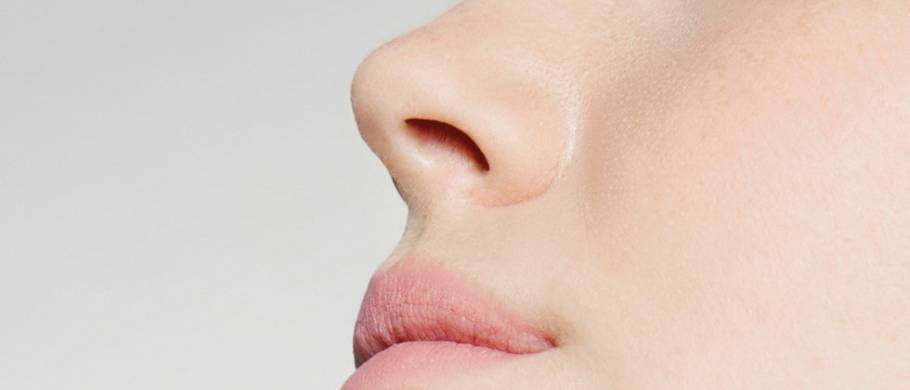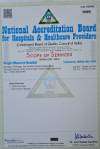Septoplasty (SEP-toe-plas-tee) is a surgical procedure to straighten the bone and cartilage dividing the space between your two nostrils (septum). When the septum is crooked, it’s known as a deviated septum. A deviated septum can make it harder to breathe through your nose and can increase the risk of sinus infections due to poor drainage.
During septoplasty, your nasal septum is repositioned to the middle of your nose. This may require your surgeon to cut and remove parts of your nasal septum before reinserting them in the proper position.
Once a septoplasty is healed, you’ll likely find it’s easier to breathe. Your surgeon can discuss what septoplasty can achieve for you.
Why it's done?

A crooked septum is common. But when it’s severe, a deviated septum can block one side of your nose and reduce airflow, causing difficulty breathing through one or both sides of your nose.
Septoplasty straightens the nasal septum by trimming, repositioning and replacing cartilage, bone or both. If you experience symptoms — such as difficulty breathing through your nose — that affect your quality of life, you may consider surgery to fix a deviated septum.
Risks:
As with any major surgery, septoplasty carries risks, such as bleeding, infection and an adverse reaction to the anesthetic. Other possible risks specific to septoplasty include:
- Continued symptoms, such as nasal obstruction
- Excessive bleeding
- A change in the shape of your nose
- A hole in the septum
- Decreased sense of smell
- Clotted blood in the nasal space that has to be drained
- Temporary numbness in the upper gum, teeth or nose
You may need additional surgery to treat some of these complications. You may also need additional surgery if the outcome of septoplasty doesn’t match your expectations. Talk to your doctor about your specific risks before surgery.
How you prepare?
Before scheduling septoplasty, you’ll meet with your surgeon to discuss the benefits and risks of the surgery. This meeting generally includes:
- Your medical history. Your doctor will ask about conditions you have or have had, as well as any current medications or supplements that you’re taking.
- A physical examination. You’ll have a physical exam, including any relevant tests. The doctor will inspect your skin and the inside and outside of your nose.
- Photographs. Someone from your doctor’s office may take photographs of your nose from different angles. Your doctor can use these photos for discussion before septoplasty or for reference during and after surgery.
- A discussion of your expectations. You and your doctor should talk about your expectations. He or she will explain what septoplasty can and can’t do for you and what your results might be.
During the procedure
The procedure may be done with either local or general anesthesia. Which type of anesthesia is used depends on how complex your surgery is, and what you and your surgeon prefer.
- Local anesthesia: This type of anesthesia is limited to your nose. Your doctor injects pain-numbing medication (anesthetic) into your nasal tissues. If you’ll also be sedated, this is done using IV medication. The medication makes you groggy but not fully unconscious.
- General anesthesia: With general anesthesia, you inhale an anesthetic agent or receive an anesthetic through an IV line. This type of anesthesia affects your entire body and induces a temporary state of unconsciousness.
Talk with your doctor beforehand about which kind of anesthesia is best for you.
During surgery, the incision is closed with absorbable suture. Soft silicone splints may be inserted inside each nostril to support the septum. To prevent postoperative bleeding, your doctor may place bandage-like material in your nose (packing).
After surgery, you’re moved to a recovery room, where the staff monitors you and watches for any complications. This procedure is typically performed on an outpatient basis, so you’ll likely be able to go home the same day. You will need someone to drive you home, however.
After the procedure
To further decrease the chances of bleeding and swelling, your doctor may ask that you follow these precautions for several weeks after surgery. Depending on the extent of your surgery, you may not need to do all of these:
- Elevate your head when you’re sleeping.
- Don’t blow your nose for several weeks.
- Wear clothes that fasten in the front; don’t pull clothing, such as shirts or sweaters, over your head.
- Avoid strenuous activities, such as aerobics and jogging, for up to five weeks to avoid potentially causing a nosebleed.
Results
By three to six months after surgery, your nasal tissues will be relatively stable. It’s still possible that cartilage and tissue may gradually move or reshape over time. Some changes can still occur for up to a year or more after surgery.
Most people find that septoplasty improves their symptoms, such as difficulty breathing, that were caused by a deviated septum. The level of improvement you can expect with septoplasty varies by person.
Some people find that their symptoms continue even after surgery and opt to undergo a second septoplasty to further refine the nose and septum.
How To Reach Us?
Dr. Suraj Giri is a trusted ENT Specialist in PCMC, Pune. He has made many happy patients in his 12 years of journey as a ENT Specialist. At Devgiri Memorial Hospital you will get all the necessary medical treatment. Our advanced approach for our patient treatments make us unique.
The appointment process at Devgiri Memorial Hospital PCMC Pune is very simple. You can directly call on 09657002695. Also with the help of the “Book an Appointment” Form you can book your appointment by just filling in the basic information. We will contact you via email or phone call to confirm your appointment.



